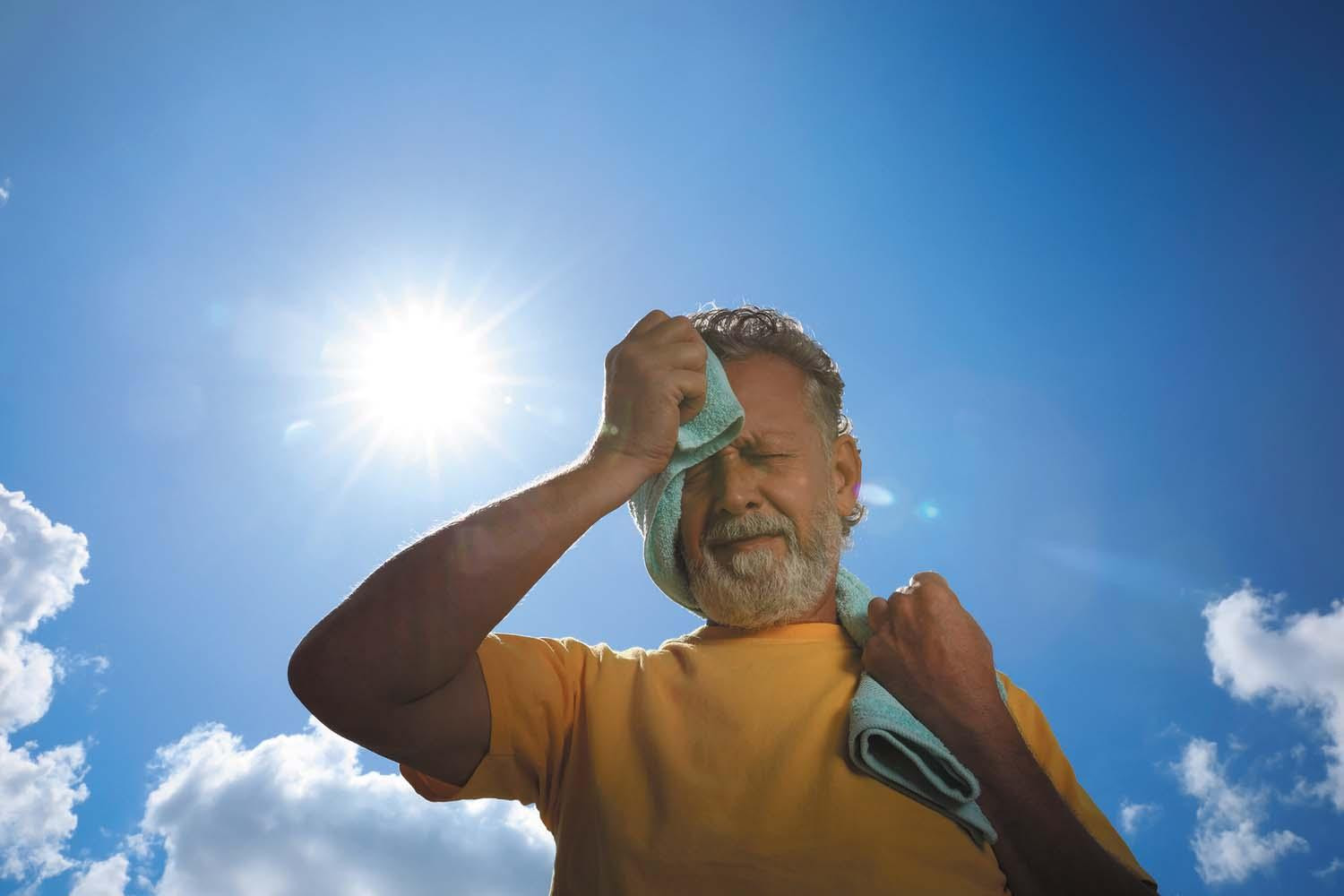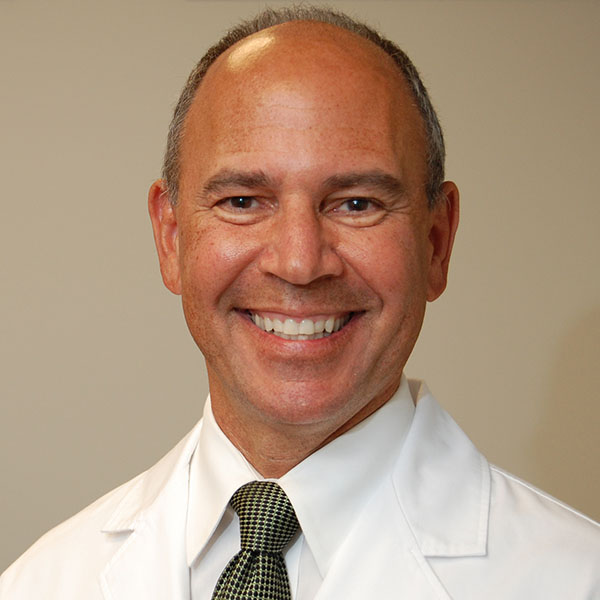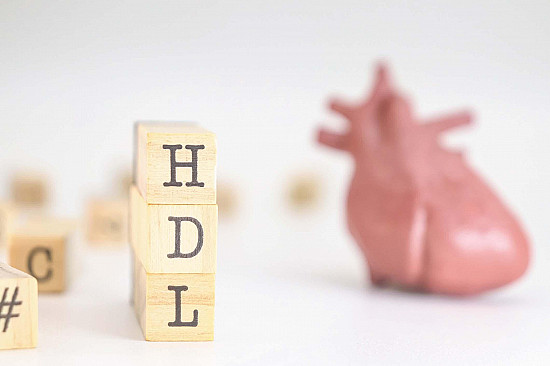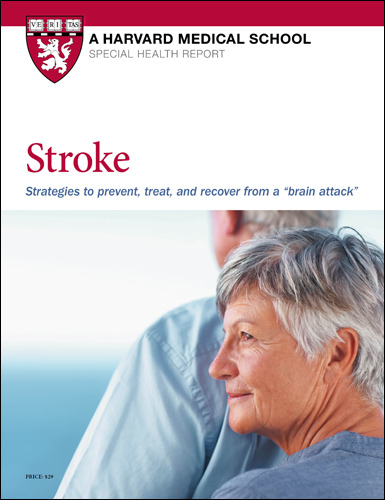Feeling the heat
Summertime means a high risk for heat-related ailments.
- Reviewed by Howard E. LeWine, MD, Chief Medical Editor, Harvard Health Publishing; Editorial Advisory Board Member, Harvard Health Publishing

The 2025 summer is predicted to be one of the warmest on record, and as temperatures climb, so does the risk of heat-related ailments, such as heat rash, heat exhaustion, and heatstroke.
Older adults are especially vulnerable in high heat, according to Dr. Barrak Alahmad, an instructor in environmental health at Harvard's T.H. Chan School of Public Health. The primary reason is biological. "The body doesn't thermoregulate as efficiently as one ages, meaning it can't maintain a steady internal body temperature when external conditions change."
Heart conditions also make people more sensitive to heat. For instance, people with heart failure due to a weak or stiff heart have reduced blood flow, which in turn makes it harder for the body to get rid of extra heat. Arteries narrowed by high cholesterol restrict blood flow to the skin and prevent the body from cooling itself with sweat. Heart medications can add to the problem. Beta blockers, which slow the heartbeat, hinder the heart's ability to circulate blood fast enough for effective heat exchange. Diuretics (water pills), which increase urine output, raise the risk of dehydration.
Older adults can protect themselves from common heat ailments by taking precautions and recognizing their early symptoms so they can seek immediate treatment.
Heat rash
Heat rash (also called prickly heat) occurs when the ducts for the eccrine glands, which create body-cooling sweat, become blocked by tight-fitting garments, skin folds, or inflammation. Sweat gets trapped beneath the skin and causes small, itchy red bumps (about the size of a pencil point). These bumps can appear on the neck, scalp, or chest or in the groin or elbow creases. Heat rash is easily treated with home remedies. First, move to a cool place and dry your skin using a fan or air conditioner. Then take a cool shower or apply cool compresses to the affected areas. Wear light, loose-fitting cotton clothing that allows airflow over your skin.
If a heat rash occurs around your groin, avoid wearing undergarments until it clears up. Use calamine lotion or over-the-counter topical corticosteroid creams or ointments to manage the itching. However, avoid baby powder, oily moisturizers, and sunscreen (but protect the affected area from sun exposure), as they can further block sweat ducts. Once you cool down your body, heat rash typically resolves within a day or two, but more severe outbreaks can last a week or longer. Visit your doctor if the heat rash persists longer than this. Seek immediate care if you experience pain or intense itching or if the rash appears infected.
Keeping your coolHere are the fundamental strategies experts and health organizations recommend to protect yourself from heat ailments. Most are well known, but it's vital to refamiliarize yourself and faithfully follow them during the summer months. Schedule your outdoor time. Plan activities in the early morning or evening when temperatures are the coolest. Stay inside during heat advisories. Stay hydrated. Drink at least 8 ounces of water every 15 to 20 minutes you are outside — and set a timer to remind you. Also monitor your urine color. If you drink enough water, your urine should be pale yellow. If you're even slightly dehydrated, the color darkens. Protect your skin. Sunburn impairs your body's ability to cool down and increases dehydration. When you're outdoors, wear a wide-brimmed hat, wraparound sunglasses, and lightweight, light-colored, loose-fitting clothing. Be generous with sunscreen. Apply broad-spectrum or UVA/UVB sunscreen with an SPF of 30 or higher to all exposed skin 30 minutes before stepping outside. Reapply every two hours. Follow the "teaspoon and shot glass rule": use 1 teaspoon of sunscreen for your face and neck and enough to fill a shot glass (about two tablespoons) for other exposed areas of your body. |
Heat exhaustion
Heat exhaustion occurs when the body cannot dissipate excess heat fast enough. Symptoms include heavy sweating, muscle pain or cramps, and lightheadedness. "Heat exhaustion is exacerbated when the body loses excessive amounts of water and salt, usually through heavy sweating," says Dr. Alahmad.
Additional symptoms may appear, such as weakness, headache, nausea, and flushed, clammy skin. Heat exhaustion can also affect mental clarity and judgment. Treatment focuses on quickly lowering body temperature. Remove unnecessary clothing, including shoes and socks. Apply cold compresses to the skin, like ice packs or towels soaked with cool water. Find an air-conditioned environment and, if possible, take a cool shower or bath. In the meantime, continue hydration by taking frequent sips of cool water (below 60° F), according to Dr. Alahmad. "Any heat exhaustion case should be treated seriously and warrants having a family or friend immediately drive you to an emergency department or by calling 911 if necessary," he says.
Heatstroke
If not treated, heat exhaustion can quickly turn into life-threatening heatstroke. Heatstroke occurs when your body's internal temperature reaches above 103° F. Heatstroke is a medical emergency demanding immediate hospital treatment, as it can damage the heart, liver, kidneys, brain, and blood clotting system, leading to death.
Symptoms resemble heat exhaustion initially but become more severe and progress quickly. Warning signs might include any of the following: lack of sweating, skin that is red or hot, rapid pulse, lethargy, dizziness, nausea, weakness, and confusion. "While heatstroke is life-threatening, the condition is also 100% manageable if the body is cooled down immediately," says Dr. Alahmad.
Image: © Liudmila Chernetska/Getty Images
About the Author

Matthew Solan, Executive Editor, Harvard Men's Health Watch
About the Reviewer

Howard E. LeWine, MD, Chief Medical Editor, Harvard Health Publishing; Editorial Advisory Board Member, Harvard Health Publishing
Disclaimer:
As a service to our readers, Harvard Health Publishing provides access to our library of archived content. Please note the date of last review or update on all articles.
No content on this site, regardless of date, should ever be used as a substitute for direct medical advice from your doctor or other qualified clinician.
















